The Pacific Ocean is the largest ocean in the world, covering more than 30% of Earth’s surface (approximately 64 million square miles). Our route to sail from Panama to French Polynesia spanned over 4,000 nautical miles and was the longest passage of our circumnavigation. What would you do if you could not go to a grocery store or restaurant for 27 days? This was our approach…
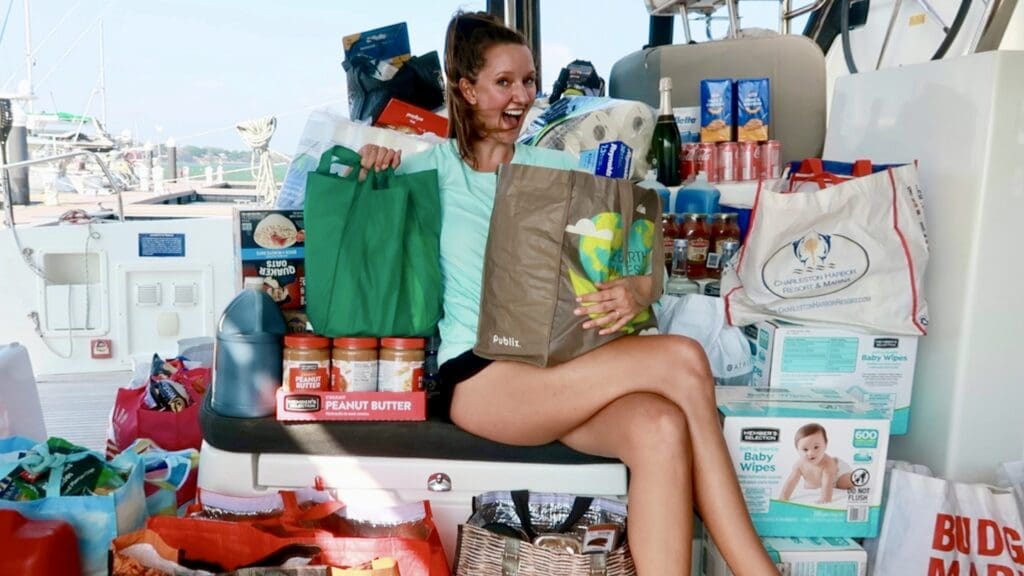
Take Inventory & Maximize Storage Space: Remove everything from interior cabinets, drawers, and storage compartments.
While waiting for a weather window on the dock in Panama, I emptied every interior storage space aboard Sabado. I vacuumed and wiped everything down with diluted vinegar to help kill/prevent mold before reloading the contents- taking note of what we already had, checking expiration dates and the integrity of the packaging, and throwing away/donating anything we didn’t need to maximize available space.
Research Provisioning Options at Destination: What groceries are available in French Polynesia? What’s cheaper to stock up on before we leave Panama?
Before doing any sizable provisioning haul, I like to research our future cruising grounds to get a feel for what’s readily available, what is grown there vs. what is imported, and what is subsidized by the government; typically, locally grown and government-subsidized products are plentiful and affordable, so I planned to stock up on other items that may be harder to find beforehand. We hope to stay in French Polynesia for over a year, so I provisioned for more than just our time at sea! Here are two blog posts I found helpful about provisioning in French Polynesia:
Revise The Big List: Our list is at the bottom of this post.
I keep a master list of provisions for Sabado, including first aid supplies, cleaning products, dried/canned goods, and fresh produce, lovingly called “The Big List.” I refer to this list frequently and adjust the numbers according to what we already have and how long we hope to go before restocking. I keep our available storage space in mind while finalizing the numbers. If you don’t have a good idea of your general consumption, track for a month or two: make a note when you throw away an empty tube of toothpaste or open a can of beans. Take those numbers and multiply by however long you’re provisioning for.
Chances are, you won’t be buying everything on your list at one store in one trip. So, do yourself a favor and break your list into manageable chunks. This way, you aren’t scrolling through the seemingly infinite Big List in the aisles of the grocery store… Since I provisioned in Panama, where the primary language spoken is Spanish, I found this document incredibly helpful while shopping- it significantly cut down on the amount of time I spent translating labels in the store, especially when it came to different cuts of meat!
Shopping: I brought every reusable bag we had with me!
We did the bulk of our shopping at Supermercado Rey. Most of their products have a “buy four deal,” bringing the prices below Super 99, Riba Smith, and even Price Smart if you buy large quantities. Deli Club Market was great for stocking up on sushi-making supplies and Asian sauces. Some stores will let you leave a full cart up front while you continue shopping so you can check out all at once; others will require you to pay each time you fill a cart; ask when you arrive so you can plan accordingly! For fresh produce, I went to Merca Panamá, which had a large selection of non-refrigerated fruits and vegetables (I find they last longer if they haven’t been refrigerated yet) for very low prices! It was a test of my limited Spanish, but everyone was accommodating, and I managed to leave with everything I wanted.
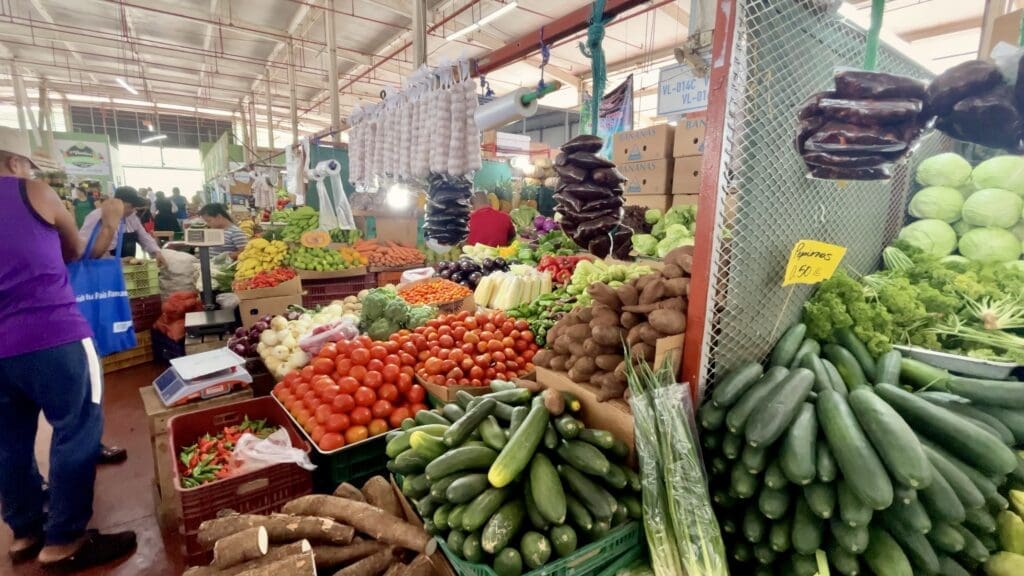
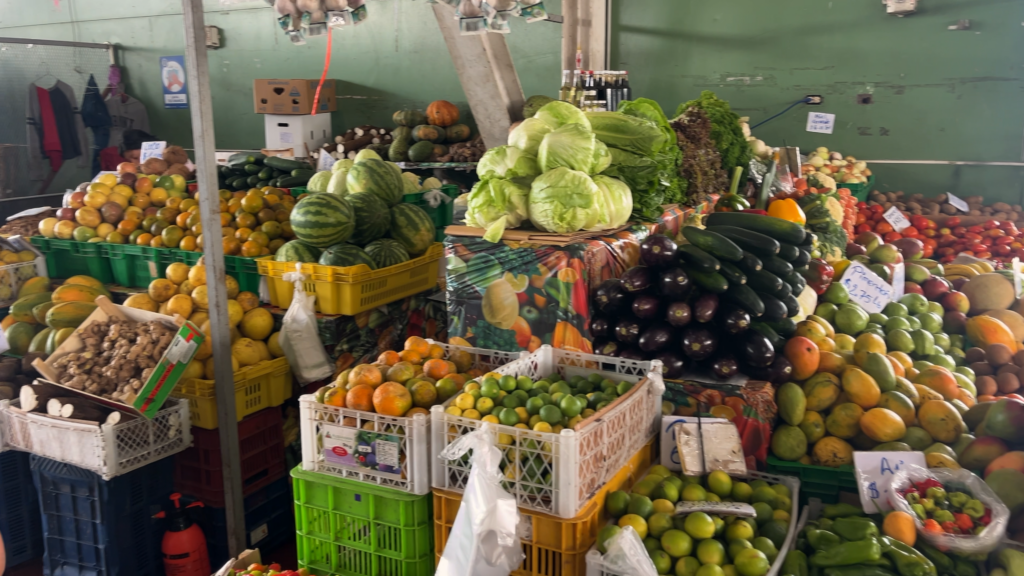
Things I couldn’t find in Panama: canned green chilis, Rice Krispie cereal, whole or speared dill pickles (only sliced and sweet miniature pickles were available), sour cream, green or red Thai curry paste, fish sauce, orzo, and not many canned soup options.
Storage Tips
- Remove all cardboard immediately after shopping and get it off the boat to keep your space bug-free.
- Remove all unnecessary packaging to limit garbage while underway. We made landfall with only one bag of trash!
- Label the tops of canned goods in case the original labels wear off and so they’re easily identifiable from above when in storage compartments.
- Place a couple of dried beans in your spice jars to keep them from clumping in the humidity. You can also use rice, but I find beans easier to pick out of your food if you accidentally drop one in!
- If storing things in the bilge, keep them in a container so nothing rolls around and blocks a bilge pump.
- Freeze all dry goods (pasta, rice, flour, etc.) for several days before storing with bay leaves to prevent weevil infestations.
- Soak produce in vinegar and water to clean. Make sure it’s completely dry before storing.
- Do not store onions and potatoes together. Onions release moisture, leading to mushy potatoes with eyes or roots. I kept our potatoes in an open basket down below (out of the sunlight).
- Some fruits and vegetables emit ethylene gas as they ripen, which speeds up the ripening process of other produce items. Storing these items away from others can help lengthen the shelf life of your produce. Ethylene emitters include apples, avocados, bananas, cantaloupe, kiwi, peaches, pears, peppers, tomatoes, celery… I kept ours in reusable mesh produce bags away from other produce, checking them regularly and moving them to the refrigerator/freezer as they ripened.
- We typically eat meat twice a day, so I filled our Engel freezer exclusively with meat + two bags of shelled edamame as an alternative protein source. I filled the small freezer compartment of our front-loading refrigerator with cheese and butter.

- I purchased extra fresh fruit and vegetables and froze them as they ripened/as we made room in the freezers rather than buying already frozen produce. This worked great for us and maximized the food we could fit on board!
We arrived in Hiva Oa 27 days after leaving Panama. That’s 81 meals at sea! Upon arrival, we still had fresh squash, potatoes, carrots, onions, ginger, garlic, apples, limes, eggs, and cabbage (honorable mention: radishes, curly leaf parsley, snow peas, and baby bok choy lasted three weeks!). We still had enough meat in our freezer for ~2 weeks, plus some frozen fruit and veggies. Besides shelf-stable milk, rice, and pasta, we barely touched our dry/canned goods.
If I were to re-wind to Panama, I would purchase more snow peas and baby bokchoy; I didn’t realize they would last so long, and I would have loved to have had a couple more meals with them! I didn’t anticipate having to conserve power as much as we did, so I also wish I had bought more cereal/granola bars for easy breakfasts. Generally, breakfast is a fend-for-yourself meal on passages since one of us is typically asleep. I usually have homemade yogurt and granola or some muffins prepared to avoid cooking and making noise in the morning, but I couldn’t bake as much given our battery levels, so we were stuck with instant oatmeal, nuts, and fruit for the final two weeks.
I wouldn’t change a thing about the meal prep I did before we left. Having easy pre-cooked meal components that I could quickly reheat on our propane stove top or five minutes under the broiler made eating well through the exhaustion, rough conditions, and power problems we encountered on this passage easy! I find slow-cooked/braised meat reheats the best, and since we were on shore power before our departure, I prepared some delicious options using our induction burner and electric oven. Here are our favorite recipes and how we used them while underway:
- Used for sandwiches and a quick pizza crust (cut in half or even thirds to make it thinner).
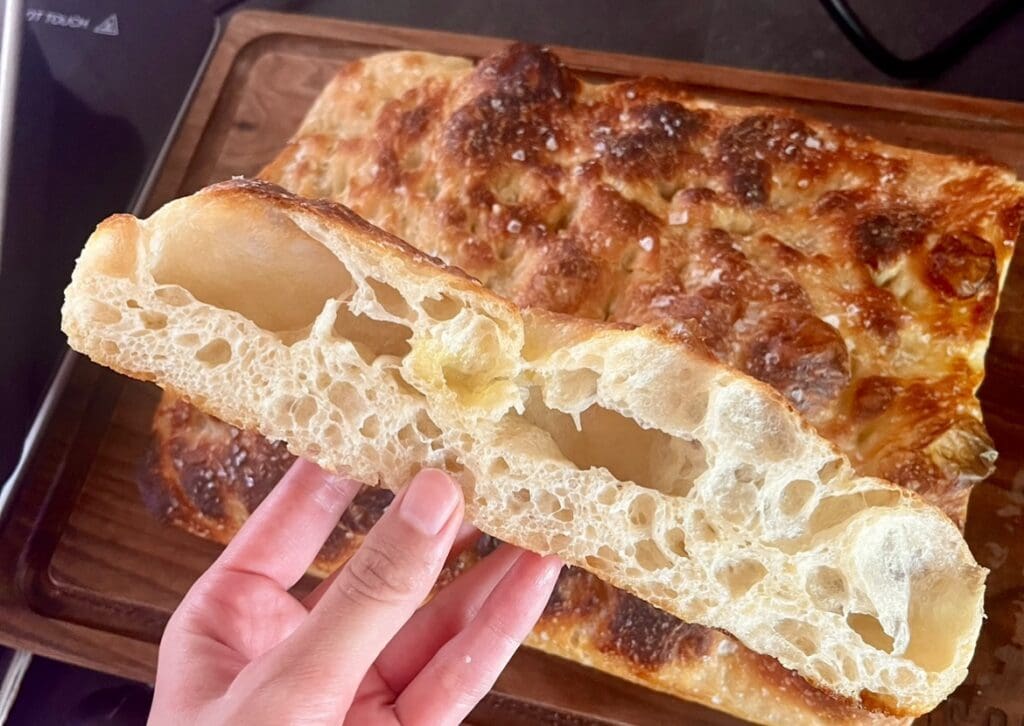
- I made a double batch, vacuum sealed, and froze. I defrosted and reheated it on the stove for spaghetti bolognese and lasagna. Honestly, we’d eat this sauce with a spoon and a slice of bread, too.
- I shredded and vacuum-sealed this with some of the braising liquid and froze. I defrosted, reheated it under the broiler for a few minutes, and served it with white rice and veggies.
Red Wine Braised Beef Short Ribs (I added some Worcestershire sauce and rosemary to this recipe)
- I made a double batch, removed the bones, vacuum-sealed the meat with the sauce, and froze. I defrosted and reheated it on the stove, added a cornstarch slurry to thicken the sauce, and served over mashed potatoes with veggies.
- I made a double batch, vacuum-sealed it with some of the braising liquid, and froze. I defrosted and reheated it on the stove for tacos with sourdough tortillas or served in a bowl with rice and beans topped with crispy tortilla strips.
Basil Chicken Coconut Curry (This is a slow cooker recipe, but I make it in a large pot on the stove in under 45 minutes.)
- I have made this several times and customized it to our preferences. I use one package of boneless skinless chicken thighs seasoned with ½ of the spice blend (1 tablespoon dried basil, 2 teaspoons salt, 3/4 teaspoon pepper, 1 & 1/2 tablespoons yellow curry powder, 1/2 teaspoon chili powder). Sear the chicken thighs in oil on both sides, remove from the pot, and sautee ½ large red onion, diced + 2 seeded and diced jalapeños + 3-4 cloves minced garlic. Add the chicken back to the pan with 1 can of full-fat coconut milk and 1/2c chicken broth. Let simmer until chicken is cooked through; remove and shred the chicken, taste, and add more seasoning blend if needed. I usually use almost all of the blend by the end. Return chicken to the pot and add 1tsp fresh grated ginger, a handful of chopped fresh cilantro, and a cornstarch slurry to thicken. Let simmer uncovered for 10-15mins. Turn off the heat and stir in ½ lime, juiced.
- I made a triple batch (we love this curry!), kept one in a container in the fridge to eat right away, and vacuum-sealed and froze the other two. I defrosted, reheated it on the stove, and served it over rice and veggies. You could also add veggies while cooking (before freezing) to make it even easier!
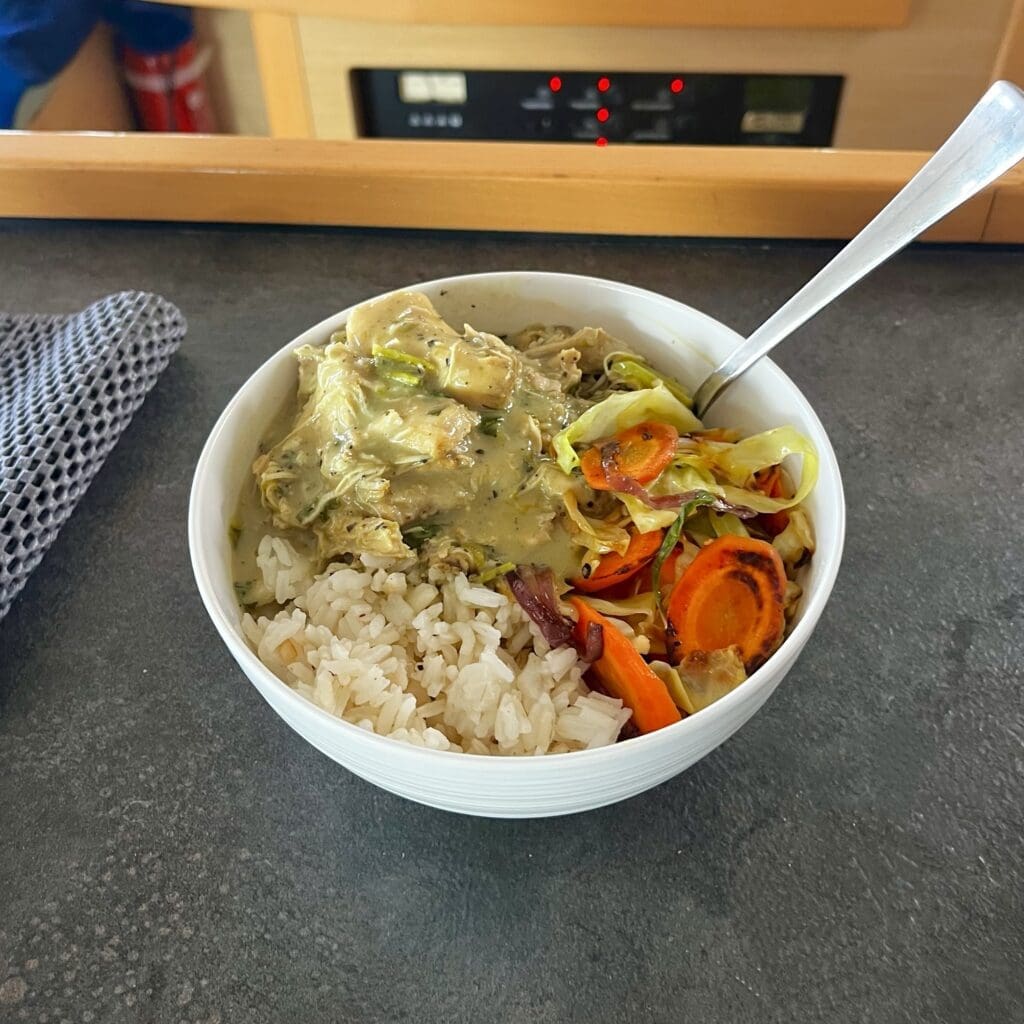
- Nothing new! This is one of our favorite passage meal prep recipes. I made it using the meat from one whole roasted chicken and put it in a container in the refrigerator to eat right away. We like to have it with shredded cheese, avocado, and tortilla chips!
Air Fryer Whole Chickens
- I used this seasoning blend and cooked four whole chickens on my air fryer’s “Roast” setting at 375°F until the internal temperature reached 165°F (about 45mins). Let cool, then separate the meat from the bones. I made bone broth with the carcasses and whatever veggie + herb scraps I had, which I used in almost every recipe listed above. I used one chicken for the chili, portioned out, and vacuum-sealed the rest to freeze. I defrosted them throughout our passage and used them for chicken fried rice, salads, pasta salads, added to ramen noodles, etc.
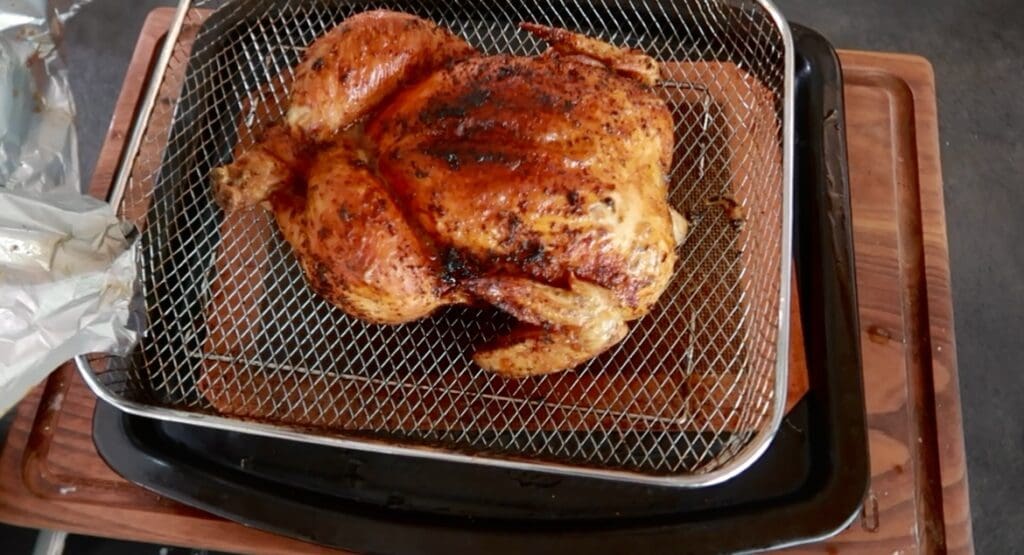
BBQ Ribs (no recipe, I just wing it)
- I baked two racks of baby back ribs, let them cool, removed the meat, vacuum-sealed it with BBQ sauce, and froze it. I defrosted and reheated them on the stove or under the broiler and served them with cornbread, baked beans, and veggies or on a bun as a BBQ pulled pork sandwich.
In addition to these meal prep recipes, here are a few of my go-to recipes while underway (I love Asian-inspired meals?):
- Blackened fish tacos
- Garlic sesame noodles (topped with seared tuna! These are also delicious cold.)
- Chinese chicken salad
- Thai noodle salad
- Crunchy Thai quinoa salad
- Cashew chicken and vegetables
- Kung Pao chicken
- One pan cheesy jalapeño chicken
- One pot orzo with sausage, spinach and corn (I use canned corn, pork sausage, shallot, and add red chili flakes)
- Sticky Asian meatballs (best in the oven, works in a skillet!)
I store all my recipes in the Paprika app so they’re available offline should I need to access them without Starlink.
This was our final Engel freezer inventory:
- Bacon, raw (3 packages)
- Saucy braised chicken thighs (2)
- Bolognese (2)
- BBQ ribs (2)
- Roast chicken (3)
- Asian braised pork shoulder (1)
- Red wine braised short ribs (2)
- Kielbasa sausage (2)
- Pork sausage (1)
- Ground pork (1)
- Raw chicken breast (5 portions, 2-3 breasts per portion)
- Shelled edamame (2 bags)
- Ground beef, raw (4)
- Ribeye, raw (3 steaks)
- Chicken curry (2)
- Sliced deli ham (1lb)
- Sliced deli turkey (1lb)
We went to the grocery store in Atuona, Hiva Oa, after clearing customs and immigration. There was a minimal supply of fresh produce and meat. There were no eggs, no cabbage, or greens of any sort. They did have potatoes, carrots, and onions, but so did we! We purchased some star fruit, pamplemousse, frozen vegetable gyoza, and chicken sausages. We have been here for one week and have traveled to four different anchorages. We have yet to find a good place to restock the freezer and haven’t had much luck fishing. I’ve heard there is a remote shopping service where you can have provisions delivered from Tahiti, so we may explore that option before heading to the remote islands of the Tuamotus!
Have any favorite passage recipes or provisioning tips? Share them in the comments!

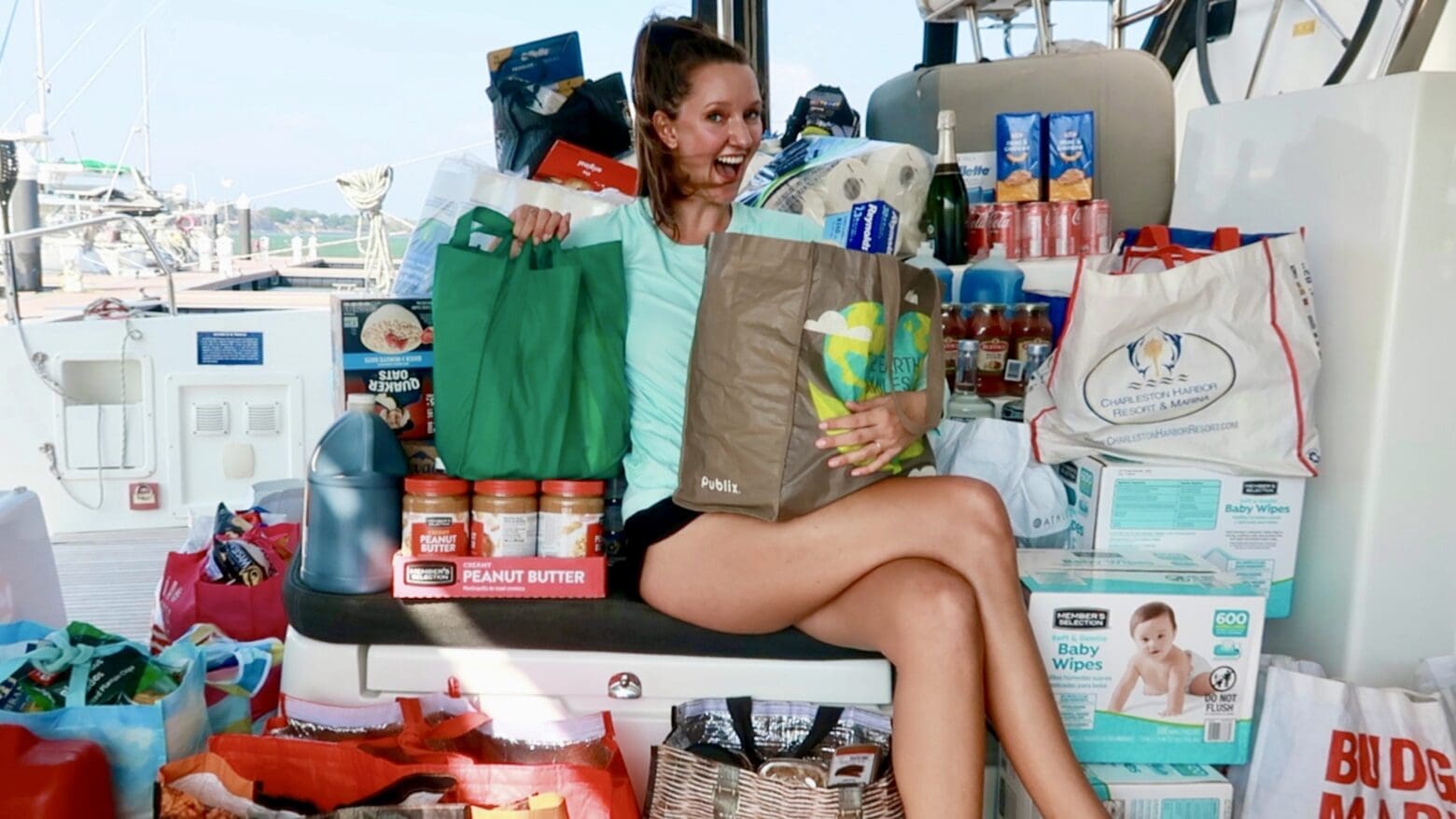
10 Responses
Holly, this is a NOVEL! THANK YOU! So helpful. Will save and frequently refer back to this.
PS- I also love Asian recipes
Annnnd now I’m hungry again!? Glad you found this helpful, Sandra!
Wow amazing detail. Could not help to think how one could prepare educationally for the life you and Ray have embarked upon. Enjoy your island life! Look forward to the next adventure!! Thanks
We learn something new everyday! We always joke that to live on a boat, you have to be a meteorologist, an engineer, a chef, a maid, a nurse, an apocalypse prepper, a physicist, a marine biologist… the list goes on and on. ?
Holy, thank you! This list and recipes are extremely helpful! The meals that you include in your videos always look so delicious. I can’t wait to try them out.
So happy you found this helpful, Kris! Hope you love them as much as we do. ☺️
Great, now I am starving. Good job Holly, you are becoming as good of a chef as your Mom….well almost!
I learned from the best! ? Come visit so I can learn more!!
Tried to look at “The Big List” pdf but only the first page of medical supplies list would populate. Thanks so much for sharing.
Try it now. Sorry about that. Also, it may still be cached incorrectly on your device so this link should work as well. https://www.svsabado.com/wp-content/uploads/2024/05/the-big-list.pdf